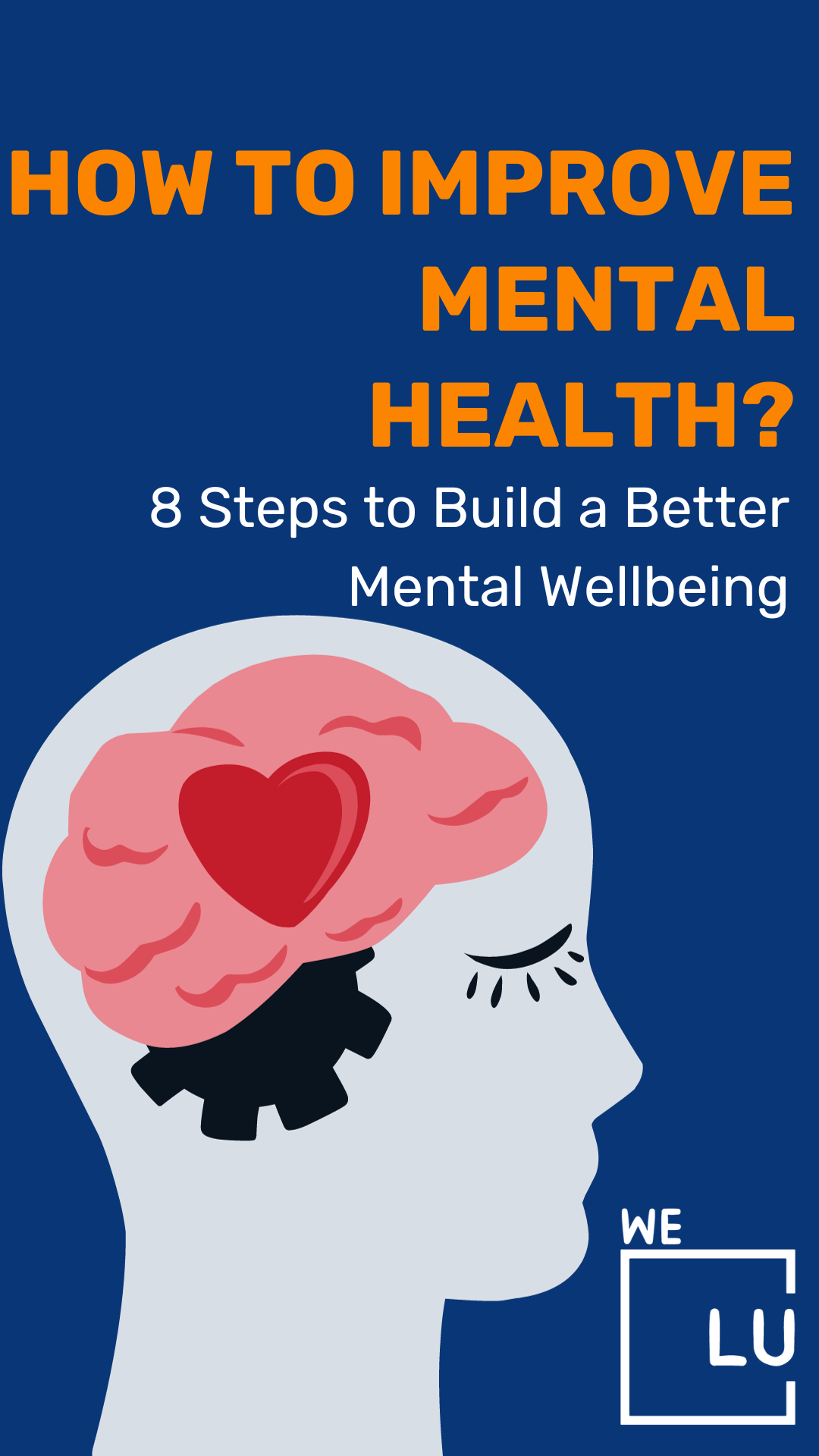PMDD Test
Please take the following quiz to assess if you are experiencing signs and symptoms of PMDD. Ensure you answer the questions honestly and thoroughly, reflecting your current emotional state rather than how you aspire to feel. It is important to remember that seeking help is always an option, regardless of the time that has passed. Let’s begin with the “PMDD Test” from We Level Up’s treatment center network. Premenstrual dysphoric disorder (PMDD) represents an intense manifestation of premenstrual syndrome (PMS). It entails a spectrum of emotional and physical symptoms that occur consistently in a week or two leading up to your menstrual period. Here are some common behavioral symptoms associated with PMDD:
- Anger or irritability.
- Lack of interest in activities once enjoyed.
- Increased appetite.
Please complete the free PMDD test to gain insights into your circumstances. This concise PMDD test aims to identify behavioral patterns that may indicate a tendency toward PMDD. While it can provide valuable information, it is essential to note that it is not intended as a comprehensive diagnosis or for diagnosing a specific type of PMDD. Depending on your responses, you may receive a potential indication of PMDD. If so, we are here and prepared to offer assistance. However, consulting with a healthcare professional for a clinical diagnosis is crucial. Please feel free to contact us 24/7 with any questions, and rest assured that no obligations are involved.
Take Our Free PMDD Test
Take Our PMDD Test Online Confidential Results
Premenstrual Dysphoric Disorder (PMDD) is a severe form of premenstrual syndrome (PMS) characterized by significant mood disturbances, such as irritability, sadness, and anxiety, along with physical symptoms. This test is not a diagnostic tool, and consulting with a healthcare professional is recommended for an accurate assessment. The following questionnaire is designed to provide a preliminary indication of whether you may be experiencing symptoms associated with PMDD.
*By taking this free quiz, you may obtain your results online and in your email box. You’ll have the opportunity to opt-in to learn more about your symptoms, talk to a mental health consultant and join our newsletter. Rest assured your information is private and confidential. Results, consultations and assessment are provided without any cost to you and without any obligation. If you do not wish to provide your contact information, you may omit it during your quiz. Thank you for opting in and participating. To you best of health.
What Is A PMDD Saliva Test?

A PMDD saliva test involves analyzing levels of hormones or biomarkers present in saliva to diagnose or assess premenstrual dysphoric disorder (PMDD) potentially. This test aims to detect fluctuations in hormone levels or other markers associated with PMDD symptoms, providing insight into hormonal imbalances that might contribute to the condition. However, it’s essential to note that while research on such tests continues, their clinical use and accuracy might still be under investigation or development.
It’s important to understand that while a PMDD saliva test is a concept under exploration, its practical application and reliability are still subjects of ongoing research. The idea behind such a test is rooted in the understanding that hormonal imbalances, particularly fluctuations in estrogen and progesterone levels, may contribute to the manifestation of PMDD symptoms.
While advancements in diagnostic tools are continually being made, the diagnosis of PMDD often relies on clinical evaluation, including a thorough assessment of a person’s symptoms, medical history, and, in some cases, tracking menstrual cycles over several months. As research progresses, the potential role of saliva tests in aiding the diagnosis of PMDD may become more apparent, but consulting with healthcare professionals for the most up-to-date information is advisable.
Who Is This PMDD Test For?
A PMDD test would generally be intended for individuals who experience significant emotional and physical symptoms in the premenstrual phase and suspect they may have premenstrual dysphoric disorder (PMDD). PMDD is a severe form of premenstrual syndrome (PMS) that can significantly impact a person’s quality of life.
Potential candidates for a PMDD test may include individuals who:
- Experience Severe PMS Symptoms: Those who undergo intense emotional and physical symptoms a week or two before their menstrual period, affecting their daily functioning and well-being.
- Seeking Confirmation of PMDD Diagnosis: Individuals who have discussed their symptoms with a healthcare professional and are exploring diagnostic tools to confirm or rule out PMDD.
- Require Objective Evidence: Some individuals and healthcare providers may seek objective evidence through diagnostic tests to support a PMDD diagnosis, especially if symptoms are not easily distinguishable or need more concrete data.
It’s important to note that PMDD is a clinical diagnosis. While research on diagnostic tests, including potential saliva tests, is ongoing, a healthcare professional’s evaluation is crucial for an accurate diagnosis. If someone suspects they have PMDD or experiences severe premenstrual symptoms, it is recommended to consult with a healthcare provider for a comprehensive assessment and guidance on appropriate diagnostic approaches.
Once you have finished answering the PMDD test, please submit your responses and wait for the results. Sharing your test results with a professional healthcare counselor or mental health expert is advisable. If you require assistance, feel free to contact the We Level Up treatment center advocates for a complimentary evaluation and consultation regarding PMDD. Rest assured, no obligations are involved, and your call will remain confidential and free of charge.
Get Help. Get Better. Get Your Life Back.
Searching for Accredited Drug and Alcohol Rehab Centers Near You?
Even if you have failed previously and relapsed, or are in the middle of a difficult crisis, we stand ready to support you. Our trusted behavioral health specialists will not give up on you. When you feel ready or just want someone to speak to about therapy alternatives to change your life call us. Even if we cannot assist you, we will lead you to wherever you can get support. There is no obligation. Call our hotline today.
(844) 597-1011What Are The Symptoms Of Premenstrual Dysphoric Disorder (PMDD)?
Premenstrual Dysphoric Disorder (PMDD) is characterized by severe emotional and physical symptoms that occur in the luteal phase of the menstrual cycle (typically the two weeks before menstruation). These symptoms significantly impact a person’s daily life and functioning. Common symptoms of PMDD include:
- Mood Symptoms:
- Intense feelings of sadness or despair.
- Marked irritability or anger, often leading to conflicts with others.
- Anxiety or tension.
- Mood swings.
- Crying spells.
- Cognitive Symptoms:
- Difficulty concentrating.
- Decreased interest in usual activities.
- Fatigue or lack of energy.
- Feeling overwhelmed or out of control.
- Physical Symptoms:
- Breast tenderness or swelling.
- Joint or muscle pain.
- Bloating or weight gain.
- Headaches.
- Changes in appetite, often with specific food cravings.
- Behavioral Symptoms:
- Sleep disturbances, such as insomnia or excessive sleep.
- Changes in appetite or food cravings.
- A sense of being out of control.
It’s important to note that these symptoms are severe compared to typical premenstrual symptoms and significantly interfere with daily life, relationships, and work. PMDD symptoms are cyclical, occurring in a predictable pattern related to the menstrual cycle. Diagnosis is typically based on thoroughly evaluating symptoms over several menstrual cycles.
If someone suspects they have PMDD, it’s crucial to consult with a healthcare professional for an accurate diagnosis and appropriate management. Treatment options may include lifestyle changes, psychotherapy, or medications, such as antidepressants or hormonal therapies.
Skip To:
Learn More:
- Free Online Psychosis Test, Confidential Results
- Agoraphobia Test, Symptoms & Signs Of Agoraphobia
- Emotional Abuse Test, Am I In An Abusive Relationship? Emotionally Abusive Relationship Test
- ADHD Test, Free & Online Do I Have ADHD Test
- Anger Issues Test Free & Online Confidential Results
- Schizoid Personality Disorder Test Free & Online. Do I Have Schizoid Personality Disorder Test?
- Free CIWA Score Assessment Quiz, CIWA-Ar for Withdrawal
- Free Online Drug And Alcohol Tests, Quizzes, & Assessments
- How Do I Know If I Have CHS Quiz? Free CHS Diagnosis Quiz. How To Make CHS Go Away?
- Free Online Mental Health Tests, Quizzes, Self Assessments, & Screening Tools

What Does Premenstrual Dysphoric Disorder Feel Like?
Premenstrual Dysphoric Disorder (PMDD) can be an emotionally and physically challenging experience. Individuals with PMDD often describe feeling overwhelmed by intense mood swings, heightened emotional sensitivity, and profound irritability. The emotional symptoms can manifest as deep sadness, anxiety, and a sense of despair.
Physically, PMDD may bring about symptoms such as breast tenderness, joint or muscle pain, headaches, and bloating. Fatigue and changes in sleep patterns, including insomnia or excessive sleep, are also common. These symptoms can lead to feeling out of control or emotionally drained.
It’s important to note that PMDD symptoms are cyclical, occurring in the weeks leading up to menstruation, and their severity can significantly impact daily life and relationships. Seeking support from healthcare professionals, such as gynecologists or mental health practitioners, is essential for an accurate diagnosis and effective management of PMDD symptoms.
Premenstrual Dysphoric Disorder (PMDD) can feel intensely challenging, both emotionally and physically. Individuals with PMDD often describe it as a heightened and overwhelming version of typical premenstrual symptoms. Here’s an overview of what PMDD can feel like:
- Emotional Turmoil:
- Intense Mood Swings: Sudden and extreme shifts in mood, ranging from deep sadness and despair to irritability and anger.
- Feelings of Hopelessness: A pervasive sense of hopelessness or emotional despair that may seem disproportionate to the situation.
- Cognitive Struggles:
- Difficulty Concentrating: Trouble focusing on tasks or maintaining attention.
- Feeling Overwhelmed: Sensation of being overwhelmed by even minor stressors.
- Physical Discomfort:
- Severe Fatigue: Profound tiredness that goes beyond normal fatigue.
- Aches and Pains: Increased sensitivity to pain, with muscle and joint aches.
- Behavioral Changes:
- Disrupted Sleep Patterns: Insomnia or excessive sleep during the premenstrual phase.
- Appetite Changes: Altered eating habits, including changes in appetite and specific food cravings.
- Impaired Functioning: Difficulty performing daily tasks or engaging in usual activities.
- Interpersonal Challenges:
- Strained Relationships: Increased conflict with others due to heightened emotional responses.
- Social Withdrawal: A desire to isolate oneself due to the difficulty in managing emotions.
It’s important to note that these symptoms are severe and significantly impact a person’s well-being and daily life. If someone suspects they are experiencing PMDD, seeking support from a healthcare professional is crucial for an accurate diagnosis and appropriate management. Treatment options may include lifestyle changes, therapy, or medications to alleviate symptoms.
The Causes Of Premenstrual Dysphoric Disorder
The exact causes of Premenstrual Dysphoric Disorder (PMDD) are not fully understood, but it is believed to involve a combination of biological, hormonal, and genetic factors. Some critical factors associated with PMDD include:
- Hormonal Fluctuations: Changes in hormone levels, particularly estrogen and progesterone, during the menstrual cycle, are considered a significant factor. It’s believed that the sensitivity of the brain to these hormonal fluctuations may contribute to the development of PMDD.
- Brain Chemistry: Neurotransmitters like serotonin play a crucial role in mood regulation. Altered serotonin levels or sensitivity in the brain may be linked to the mood-related symptoms of PMDD.
- Genetic Predisposition: There appears to be a genetic component to PMDD. Individuals with a family history of mood disorders or PMDD may be at a higher risk.
- Sensitivity to Hormones: Some individuals may have increased sensitivity to regular hormonal changes, leading to more pronounced symptoms during premenstrual.
- Stress and Environmental Factors: Stress and other environmental factors can exacerbate PMDD symptoms. Managing stress through lifestyle changes and coping strategies may help alleviate symptoms.
It’s important to recognize that PMDD is a complex condition, and individual experiences can vary. The interplay of these factors is not fully understood, and ongoing research aims to provide a more comprehensive understanding of the causes of PMDD. Seeking guidance from healthcare professionals can help accurately diagnose PMDD and develop an effective treatment plan tailored to individual needs.

PMS Vs PMDD
Premenstrual Syndrome (PMS) and Premenstrual Dysphoric Disorder (PMDD) are both related to the menstrual cycle and share some common symptoms. Still, they differ in terms of severity and impact on daily life.
Premenstrual Syndrome (PMS):
- Definition: PMS refers to a set of physical and emotional symptoms that occur in the days or weeks leading up to menstruation.
- Symptoms: Symptoms can include mood swings, irritability, bloating, breast tenderness, fatigue, and changes in appetite. These symptoms are generally mild to moderate in intensity and may vary from one menstrual cycle to another.
- Impact: While PMS symptoms can be bothersome, they usually do not significantly interfere with daily activities or relationships. Many women experience some degree of PMS without it, severely affecting their quality of life.
Premenstrual Dysphoric Disorder (PMDD):
- Definition: PMDD is a more severe and clinically significant form of premenstrual syndrome.
- Symptoms: PMDD involves intense emotional and physical symptoms that significantly impact a person’s well-being. Emotional symptoms can include severe depression, anxiety, and irritability. Physical symptoms may include severe breast tenderness, joint or muscle pain, and headaches.
- Impact: PMDD symptoms are severe enough to interfere with daily functioning, relationships, and work. The impact is substantial and can be debilitating for those affected.
Distinguishing Factors:
- Severity: The critical difference between PMS and PMDD is the severity of symptoms. PMDD involves more intense and debilitating symptoms.
- Functional Impairment: PMDD is associated with marked functional impairment, affecting a person’s ability to carry out daily activities, maintain relationships, and engage in everyday routines.
It’s crucial for individuals experiencing significant premenstrual symptoms to consult with a healthcare professional. They can help differentiate between PMS and PMDD, provide a proper diagnosis, and suggest appropriate management strategies, which may include lifestyle changes, psychotherapy, or medication.
How to Improve Mental Health? 8 Steps & Tips for Maintaining Your Mental Wellbeing
PMDD is treatable through various approaches, such as medication, behavioral therapy, and lifestyle adjustments. With proper diagnosis and personalized treatment, individuals with PMDD can experience significant improvements in their mental health and overall quality of life.
Seeking professional help and support can lead to better focus, enhanced coping strategies, and increased well-being for those with PMDD.
Get FREE PMDD treatment insurance check – https://welevelup.com/rehab-insurance/
If you or a loved one is struggling with PMDD or other mental disorder(s), call for a FREE consultation 24/7 at (561) 678-0917
Experience Transformative Recovery at We Level Up Treatment Centers.
See our authentic success stories. Get inspired. Get the help you deserve.
Start a New Life
Begin with a free call to an addiction & behavioral health treatment advisor. Learn more about our dual-diagnosis programs. The We Level Up Treatment Center Network delivers recovery programs that vary by each treatment facility. Call to learn more.
- Personalized Care
- Caring Accountable Staff
- World-class Amenities
- Licensed & Accredited
- Renowned w/ 100s 5-Star Reviews
We’ll Call You
Search We Level Up PMDD Test Mental Health Topics & Resources
Sources
Anxiety disorders. PMDD Test (2017).
https://www.nami.org/About-Mental-Illness/Mental-Health-Conditions/Anxiety-Disorders
Anxiety Disorders – Facts & Statistics. (n.d.).
https://adaa.org/understanding-anxiety/facts-statistics
Bipolar disorder. (2020).
https://www.nimh.nih.gov/health/topics/bipolar-disorder
Behzadifar, M., et al. (2015). Economic factors influencing mental health using multiple regression model in Ilam province of Iran.
https://www.ncbi.nlm.nih.gov/pmc/articles/PMC4764285/
Checkroud, S. R,. et al. (2018). Association between physical exercise and mental health in 1.2 million individuals in the USA between 2011 and 2015: A cross-sectional study.
https://www.thelancet.com/journals/lanpsy/article/PIIS2215-0366(18)30227-X/fulltext
Diagnostic and Statistical Manual of Mental Disorders (DSM-5-TR). (n.d.).
https://psychiatry.org/psychiatrists/practice/dsm
Houtepen, L., et al. (2018). Childhood adversity and DNA methylation in two population-based cohorts Agoraphobia test.
https://www.nature.com/articles/s41398-018-0307-3
Looking at my genes: What can they tell me about my mental health? Agoraphobia test (2020).
https://www.nimh.nih.gov/health/publications/looking-at-my-genes
McLaughlin, K., et al. (2018) psychosis test. Childhood adversities and post-traumatic stress disorder: Evidence for stress sensitisation in the World Mental Health Surveys.
https://www.cambridge.org/core/journals/the-british-journal-of-psychiatry/article/childhood-adversities-and-posttraumatic-stress-disorder-evidence-for-stress-sensitisation-in-the-world-mental-health-surveys/8C89D40BA881EBD7EABFDA915757C94B
Mental health: Strengthening our response. (2022).
https://www.who.int/news-room/fact-sheets/detail/mental-health-strengthening-our-response





